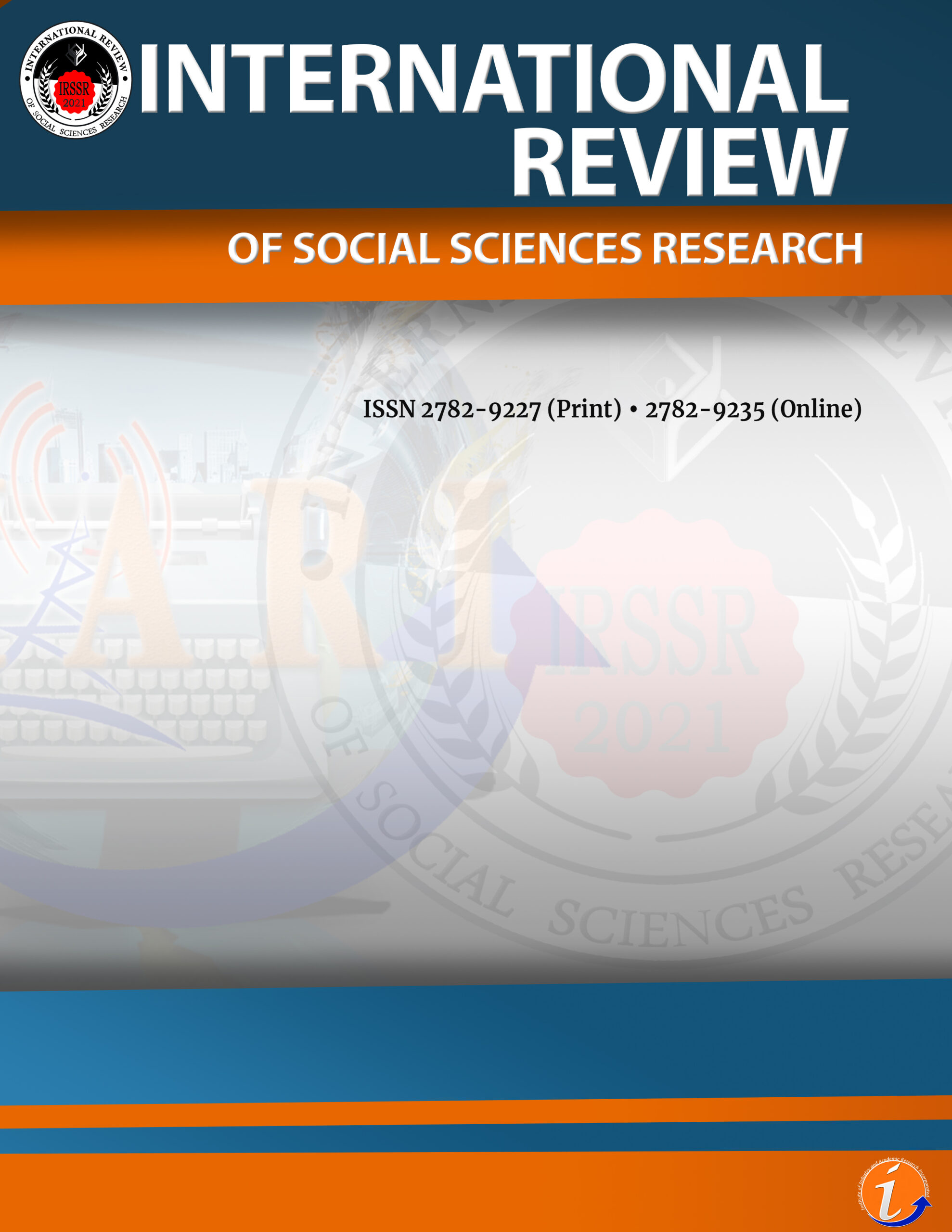Romantic love is hard to define, as it varies greatly due to factors like sex at birth, past experiences, and cultural background. These differences shape personal standards for an ideal partner, further influenced by generational shifts that impact how each generation views romance. This study addresses notable research gaps, including the limited exploration of romantic love in general and the lack of focus on Generation Z’s unique experiences in forming romantic ideals. It also examines the tendency to focus mainly on social media and online dating, often overlooking other factors that influence Generation Z's views on love. The study gathered data from nine Filipino participants who belong to Generation Z and have experienced romantic relationships. The data were analyzed using thematic analysis. It was found that Filipino Generation Z’s romantic ideals are shaped by diverse influences, including media portrayals, cultural norms, and personal experiences. While personal growth and shared values are significant, the key discovery is that individual introspection and self-reflection play a central role in shaping romantic standards. This study suggests that counseling practices can be enhanced by integrating Adler’s theory of subjective interpretation and Glasser’s choice theory. Both frameworks emphasize the role of self-awareness and personal agency in decision-making, aligning with Generation Z’s introspective approach to love. By understanding that Generation Z’s romantic standards are not solely shaped by societal norms but by conscious self-reflection, counselors can better support clients in making relationship choices rooted in authenticity and personal values. This approach supports healthier relationship dynamics by fostering self-awareness and autonomy of Generation Z individuals wanting to pursue romantic relationships.
psychology, partner standards, romantic relationships, Filipino, generation Z
Exequiel Josh Manalili. Corresponding author. Bachelor of Science–Master of Arts in Psychology and Counseling, Faculty of Behavioral and Social Sciences, Philippine Normal University-Manila, Philippines. Email: manalili.ejm@stud.pnu.edu.ph
Marie Chiela Malcampo. MAEd Guidance and Counseling, Associate Professor, Philippine Normal University-Manila, Philippines. Email: malcampo.mcc@pnu.edu.ph
"All authors equally contributed to the conception, design, preparation, data gathering and analysis, and writing of the manuscript. All authors read and approved the final manuscript."
No potential conflict of interest was reported by the author(s).
This work was not supported by any funding.
This study was conducted in accordance with the ethical guidelines set by Philippine Normal University’s Research Management Office.
The author declares the use of Artificial Intelligence (AI) in writing this paper. In particular, the author used Quillbot to paraphrase thoughts and check for any grammatical errors. The author takes full responsibility in ensuring proper review and editing of contents generated using AI.
The author extends sincere gratitude to Dr. Darwin Rungduin, professor in Research in Psychology 1 and 2, for teaching the fundamental knowledge of research and thesis writing. His guidance has been instrumental in shaping the author's understanding of the research process, and his encouragement has inspired the integration of learned concepts into the development of this paper. Appreciation is also extended to the guidance counselors of the Student Affairs and Services Office at Philippine Normal University – Manila for their valuable feedback and insightful comments on the interview questions. Their expertise has significantly contributed to the refinement of this study.
Agbayani, A., Hernandez, C. J., Libatique, J. R., Magay, J., & Cada, L. (2023). Effectiveness of influencer marketing for building a Filipino product brand. Journal of Undergraduate Research in Business Administration, 1(6), 1-14.
Apostolou, M., Christoforou, C., & Lajunen, T. J. (2023). What are romantic relationships good for? An explorative analysis of the perceived benefits of being in a relationship. Evolutionary Psychology, 21(4). https://doi.org/10.1177/14747049231210245
Barroso, A., Parker, K., & Bennett, J. (2020, May 27). How millennials approach family life. Pew Research Center’s Social & Demographic Trends Project; Pew Research Center. https://www.pewresearch.org/social-trends/2020/05/27/as-millennials-near-40-theyre-approaching-family-life-differently-than-previous-generations/
Bode, A., & Kushnick, G. (2021). Proximate and ultimate perspectives on romantic love. Frontiers in Psychology, 12, 573123. https://doi.org/10.3389/fpsyg.2021.573123
Bouffard, S., Giglio, D., & Zheng, Z. (2021). Social media and romantic relationship: Excessive social media use leads to relationship conflicts, negative outcomes, and addiction via mediated pathways. Social Science Computer Review, 40(6), 089443932110135. https://doi.org/10.1177/08944393211013566
Bowlby, J. (1979). The Bowlby-Ainsworth attachment theory. Behavioral and Brain Sciences, 2(4), 637–638. https://doi.org/10.1017/S0140525X00064955
Bulloch, H., & Fabinyi, M. (2009). Transnational relationships, transforming selves: Filipinas Seeking husbands abroad. The Asia Pacific Journal of Anthropology, 10(2), 129–142. https://doi.org/10.1080/14442210902856857
Buss, D. M. (2018). The evolution of love in humans. The New Psychology of Love, 42–63. https://doi.org/10.1017/9781108658225.004
Buyukcan-Tetik, A., Campbell, L., Finkenauer, C., Karremans, J. C., & Kappen, G. (2017). Ideal standards, acceptance, and relationship satisfaction: Latitudes of differential effects. Frontiers in Psychology, 8. https://doi.org/10.3389/fpsyg.2017.01691
Castillo, R. A., Jaramillo, C. Z., & Sy, L. (2022). The effectiveness of social media influencers in the cosmetic and skincare industry to the purchase intention of the Generation Z Filipinos. Journal of Business and Management Studies, 4(2), 180–191. https://doi.org/10.32996/jbms.2022.4.2.14
Chapman, H. (2011). DigitalCommons@URI Love: A biological, psychological and philosophical study. Senior Honors Projects. Paper 254. https://digitalcommons.uri.edu/srhonorsprog/254
Charlot, N. H., Balzarini, R. N., & Campbell, L. J. (2019). The association between romantic rejection and change in ideal standards, ideal flexibility, and self-perceived mate value. Social Psychology, 51(2), 1–11. https://doi.org/10.1027/1864-9335/a000392
Chesterman, S., Karantzas, G. C., & Marshall, E. M. (2021). The association between relationship events and experiences and partner evaluations: An ideal standards perspective. Frontiers in Psychology, 12. https://doi.org/10.3389/fpsyg.2021.633267
Çulfa, E., Izgi, F. D., & Çulfa, F. (2024). How the internet and social media affect and shape romantic relationships. Kastamonu İnsan ve Toplum Dergisi – KİTOD, 2(4), 383–410. https://dergipark.org.tr/en/download/article-file/4293549
Davies, M. F. (2001). Socially desirable responding and impression management in the endorsement of love styles. The Journal of Psychology, 135(5), 562–570. https://doi.org/10.1080/00223980109603719
de Munck, V. C., Korotayev, A., de Munck, J., & Khaltourina, D. (2011). Cross-cultural analysis of models of romantic love among U.S. Residents, Russians, and Lithuanians. Cross-Cultural Research, 45(2), 128–154. https://doi.org/10.1177/1069397110393313
Dela Llarte, R. G. (2024). Unveiling the virtue and passion of hiya as a means of social control against the Filipino queer identity. https://www.talisik.kritike.org/files/2023-DELA-LLARTE.pdf
Erol, R. Y., & Orth, U. (2016). Self-esteem and the quality of romantic relationships. European Psychologist, 21(4), 274–283. https://doi.org/10.1027/1016-9040/a000259
Esquibel, I. J. (2005). A correlational study between social anxiety, filipino concept of hiya and peer relations among first year public high school students. Upm.edu.ph. http://dspace.cas.upm.edu.ph:8080/xmlui/handle/123456789/2850
Fernandez, J. R. B. (2021, June 24). Traditional Filipino courtship amongst Gen-Z. https://www.researchgate.net/publication/357865414_Traditional_Filipino_Courtship_Amongst_Gen-Z
Fisher, H. E., Aron, A., & Brown, L. L. (2006). Romantic love: a mammalian brain system for mate choice. Philosophical Transactions of the Royal Society B: Biological Sciences, 361(1476), 2173–2186. https://doi.org/10.1098/rstb.2006.1938
Fletcher, G. J. O., & Simpson, J. A. (2000). Ideal standards in close relationships. Current Directions in Psychological Science, 9(3), 102–105. https://doi.org/10.1111/1467-8721.00070
Forrester‐Jones, R., Dixon, J., & Jaynes, B. (2023). Exploring romantic need as part of mental health social care practice. Disability & Society, 1–23. https://doi.org/10.1080/09687599.2023.2222900
Hazan, C., & Shaver, P. (1987). Romantic love conceptualized as an attachment process. Journal of Personality and Social Psychology, 52(3), 511–524. https://doi.org/10.1037/0022-3514.52.3.511
Islam, Md. N. (2021). Gender differences in mate selection criteria among university students in Bangladesh: A study from the social homogamy perspective. Heliyon, 7(6), e07378. https://doi.org/10.1016/j.heliyon.2021.e07378
Jain, D. (2022). Trust, intimacy and relationship satisfaction among young adults. The International Journal of Indian Psychology, 10(4). https://doi.org/10.25215/1004.161
Joosten, D. H. J., Nelemans, S. A., Meeus, W., & Branje, S. (2021). Longitudinal associations between depressive symptoms and quality of romantic relationships in late adolescence. Journal of Youth and Adolescence. https://doi.org/10.1007/s10964-021-01511-2
Karandashev, V. (2015). A cultural perspective on romantic love. Online Readings in Psychology and Culture, 5(4). https://doi.org/10.9707/2307-0919.1135
Kerckhoff, A. C., & Davis, K. E. (1962). Value consensus and need complementarity in mate selection. American Sociological Review, 27(3), 295. https://doi.org/10.2307/2089791
Łaski, K. (2019). Stylized features of economic growth after World War II. Oxford University Press EBooks, 162–179. https://doi.org/10.1093/oso/9780198842118.003.0010
Mahapatra, B. P., Banerjee, V., & Kaur, G. (2024). Assessment of Gen Z’s behaviors and preferences on online dating app OKCupid. Advances in Systems Analysis, Software Engineering, and High Performance Computing Book Series, 285–318. https://doi.org/10.4018/979-8-3693-5563-3.ch014
Maningo, J. (2024). Courtship in pixels: Examining romantic expressions in digital photography through a mixed-method approach. University of the Philippines Open University. https://doi.org/10.5281/zenodo.13731598
Mattingly, B. A., McIntyre, K. P., & Lewandowski, G. W. (Eds.). (2020). Interpersonal relationships and the self-concept. Springer International Publishing. https://doi.org/10.1007/978-3-030-43747-3
McGuire, K. (2015). Millennials’ perceptions of how their capacity for romantic love developed and manifests. Theses, Dissertations, and Projects. https://scholarworks.smith.edu/theses/659/
Noordam, C. (2017). What is love? How four generations of women talk about love. [unpublished manuscript]. Erasmus School of History, Culture and Communication https://thesis.eur.nl/pub/39703/Noordam-Carol.pdf
Parks, P. (2023). Story circles: A new method of narrative research. American Journal of Qualitative Research, 7(1), 58–72. https://doi.org/10.29333/ajqr/12844
Pasion, M. N., Mañabo, A., Hernandez, N. T., Rosario, K. K., & Fernando, J. (2023). It takes a man…and a woman!: Lived experiences of generation Z babaeng manliligaw. https://animorepository.dlsu.edu.ph/cgi/viewcontent.cgi?article=1787&context=conf_shsrescon
Pincott, J. (2008). Do gentlemen really prefer blondes? bodies, behavior and brains: the science behind sex, love, and attraction. Lake County Public Library. https://lakecounty.marmot.org/Record/.b28204037
Ray, C. (2022). Romantic media exposure’s effect on relationship beliefs and expectations. https://libres.uncg.edu/ir/asu/f/Ray_Catelyn_Spring%202022_thesis.pdf
Rokach, A. (2023). Love culturally: How does culture affect intimacy, commitment & love. The Journal of Psychology, 158(1), 1–31. https://doi.org/10.1080/00223980.2023.2244129
Rokach, A. (2024). The meanings of love: An introduction. Journal of Psychology (Washington, D.C. Online)/˜the œJournal of Psychology, 158(1), 1–4. https://doi.org/10.1080/00223980.2024.2307284
Santoniccolo, F., Trombetta, T., Paradiso, M. N., & Rollè, L. (2023). Gender and media representations: A review of the literature on gender stereotypes, objectification and sexualization. International Journal of Environmental Research and Public Health, 20(10). https://doi.org/10.3390/ijerph20105770
Slepian, R. C., Vincent, A. C., Patterson, H., & Furman, H. (2024). Social media, wearables, telemedicine and digital health,—A Gen Y and Z perspective. Elsevier EBooks, 1, 524–544. https://doi.org/10.1016/b978-0-12-824010-6.00072-1
Sprecher, S., & Toro-Morn, M. (2002). A study of men and women from different sides of earth to determine if men are from Mars and women are from Venus in their beliefs about love and romantic relationships. Sex Roles, 46(5/6), 131–147. https://doi.org/10.1023/a:1019780801500
Sternberg, R. J. (1986). A triangular theory of love. Psychological Review, 93(2), 119–135. https://doi.org/10.1037/0033-295X.93.2.119
Wandhe, P. (2024). The new generation: Understanding Millennials and Gen Z. Social Science Research Network, 11(1). https://doi.org/10.2139/ssrn.4716585
Wang, W., & Taylor, P. (2011, March 9). Comparing Millennials with Gen Xers. Pew Research Center’s Social & Demographic Trends Project. https://www.pewresearch.org/social-trends/2011/03/09/ii-comparing-millennials-with-gen-xers/
Wood, J. T. (1994). Gendered media: The influence of media on views of gender (p. 32). https://www1.udel.edu/comm245/readings/GenderedMedia.pdf
Cite this article:
Manalili, E.J. & Malcampo, M.C. (2025). A narrative exploration of romantic experiences and ideal relationship standards among Filipino Gen Z. International Review of Social Sciences Research, 5(2), 126-155. https://doi.org/10.53378/irssr.353199
License:
![]()
This work is licensed under a Creative Commons Attribution (CC BY 4.0) International License.










